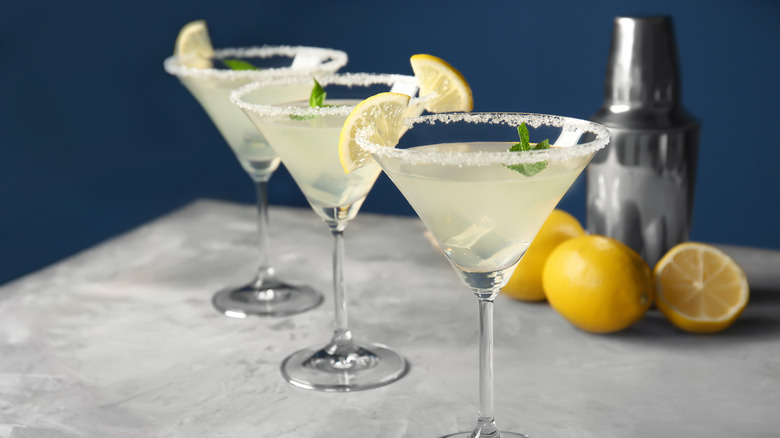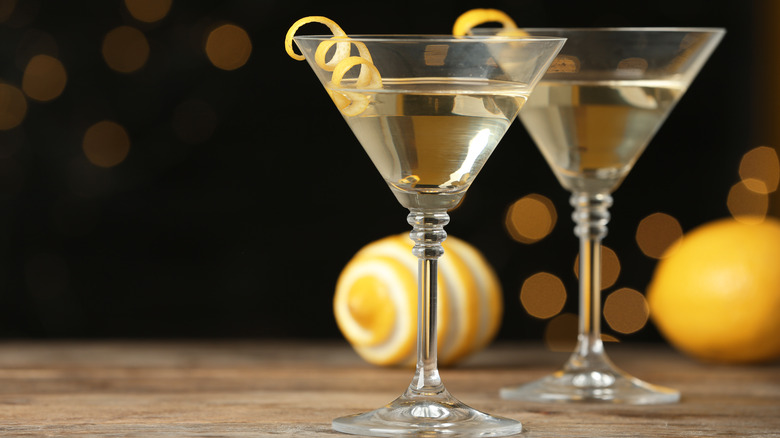The Lemon Drop Martini Was Invented At San Francisco's Original 'Fern Bar'
The origin of classic lemon drop candies can be traced back to the 1800s, when the bright yellow lozenges helped mask the less-than-desirable tastes of medicine, according to L'Orenta Gourmet Nuts and Goodies. It was only a matter of time before the easily recognized sweet-and-sour flavor found its way into drinkable form, and the public's palate was primed for a cocktail that was not only pretty to look at but also enjoyable to put back.
Enter the lemon drop, a zingy cocktail sweetened and balanced with simple syrup and garnished with a sugar rim. A Couple Cooks explains the drink recipe is formulaic, with liquor, citrus, and orange liqueur shaken and served in a martini glass. First poured in the 1970s at a bar in San Francisco, the drink quickly found fame, and the unique atmosphere of the bar most likely contributed to the rise of this tart yet drinkable cocktail.
A new category of bars
Henry Africa's Bar opened in 1969 and became known for the creative decorating choices of the owner, Norman Hobday, recalls Vintage American Cocktails. At a time when bars catered mostly to men, Hobday set out to design a space that was equally friendly to women. Stained-glass windows and sparkling chandeliers cast light throughout the space, and sweeter drinks were served with the aim of attracting a more diverse bar crowd. Ferns covered the area, Avital Tours recollects, and the bar's reputation for its greenery and drinks quickly escalated, along with orders of the lemon drop.
Throughout the late 1960s and into the 1970s, "fern bars" became known as a category of establishments associated with women-friendly atmospheres, notes Inside Hook, with the last of the bunch — the Royal Oak — having been sold and closed in 2021.
Craving that zingy taste of sugary lemon but not in cocktail form? Our lemon gooey butter cookies recipe just might do the trick.

